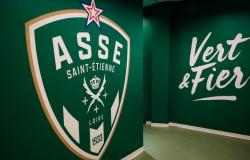A first helium leak had already been detected before takeoff. NASA assures that the ship “remains stable”.
Two new helium leaks, in addition to a previously known one, were detected in flight on Boeing’s Starliner spacecraft, which is carrying two NASA astronauts and is due to dock with the International Space Station this Thursday. The spacecraft “remains stable,” NASA said overnight from Wednesday to Thursday.
In total, Starliner now has three helium leaks. One of them had been identified before takeoff of this mission awaited for years, which took place on Wednesday from Florida. It was decided not to repair this first helium leak located on one of the ship’s thrusters, because after analysis NASA had described it as “small” and considered that it did not represent a danger.
Helium is not a flammable gas, but it is used in the ship’s propulsion system. The other two leaks are “new since the spacecraft arrived in orbit,” NASA said on X. “Two of the affected helium valves have been closed.”
Monitored vehicle status
Thursday morning, NASA clarified that those responsible for the mission had met and given the green light for the spacecraft to dock with the International Space Station (ISS), still scheduled for 4:15 p.m. GMT. “They checked the condition of the vehicle and continue to monitor” the flow of leaks, she added. A press conference is also planned after the ship docks with the ISS.
Boeing must demonstrate during this test flight that Starliner is safe to begin regular operations. The empty spaceship has already reached the ISS once in 2022, but this is the first time it has carried astronauts. Butch Wilmore, 61, and Suni Williams, 58, have each been to the ISS twice in the past and have been training for several years for this mission.
The Starliner development program has been marred by multiple disappointments leading to years of delays. Boeing was thus beaten by SpaceX, which has already been transporting astronauts to the ISS since 2020. But NASA wants to have a second means of transport in order to better be able to deal with possible problems on one of the capsules or emergency situation.






